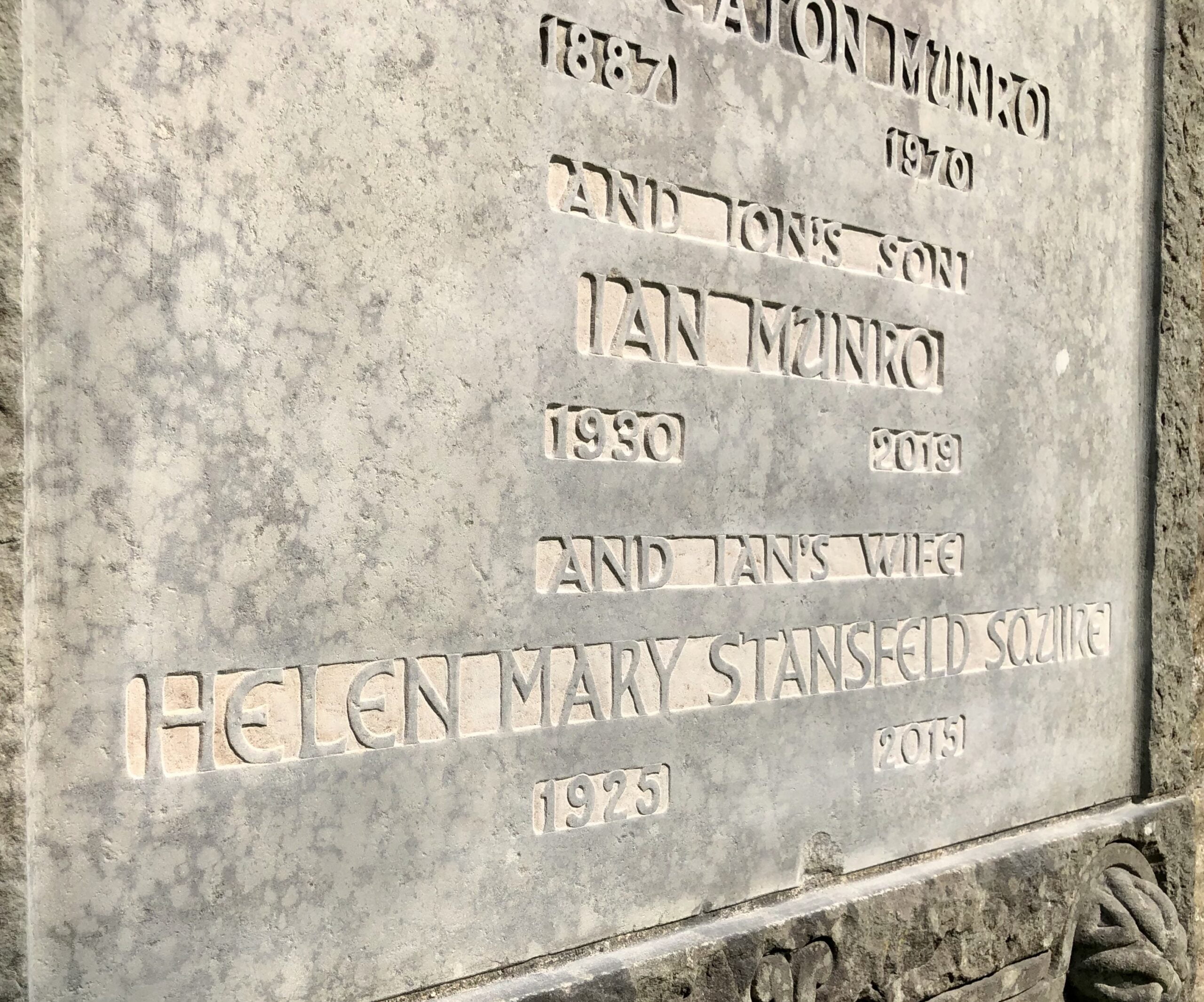
When choosing stone for a memorial, you will need to consider the following things:
Location In Scotland, where I am based, the typical stone used in graveyards is granite as it weathers well in harsh climates. However, granite is not a good type of stone for hand carved lettering so most headstones are machine cut which will give the headstone a different and less unique appearance. It is often a good idea to look around the graveyard to see what type of stone has been used in the past. You may want the new headstone to blend in with its surroundings so using a local stone maybe a good idea.
Climate It is important to choose a stone which will survive the climate. The stone will weather over time often becoming green but the lettering needs to remain clear.
The length of inscription and Reliefs If you decide to have a long inscription, the letters will have to be smaller. You will therefore need to choose a stone which will allow the inscription to be carved. This also applies to intricate reliefs.
Sourcing the stone This is an important decision because if you decide to choose an overseas stone like Marble, it will need to be sourced in Italy which will take time. However, there are a large variety of stones in the UK which make excellent headstones.
Appearance You need to decide what you would like the headstone to look like and what type of material you think would be suitable.
Types of Stone
Slate is a beautiful material for a headstone as it is long lasting and the hand carved letters will look crisp. It is also good for long inscriptions that require smaller letters. Slate is not polished so the stone will weather and blend into its surroundings. I often buy slate from Wales and it is dark grey and softer than the Cumbrian versions which are equally good.
Limestone
Portland Limestone is often used for headstones as its long lasting, and gives a clean look. It starts off white but will weather over time but this will make the lettering clearer. It is good for large letters which need to be deeply cut and excellent for reliefs.
Forest Limestone comes from Gloucestershire and is one of my favourite stones because its colour and texture.
Purbeck Limestone comes from Dorset and is a hard and yellow stone which is often used for headstones.
Hopton Wood Limestone was a popular stone used in the past but is no longer available. It comes from Derbyshire and is fine and similar to marble and was used to make the headstones for the Commonwealth War Graves.
Marble I have often been asked to make headstones in marble as this is softer than granite which is popular in Scotland. The marble is sourced from Carrara in Italy and is white or white/grey and is long-lasting. However, when you choose marble you will need to consider the climate as marble probably looks best in sunshine. The hand carved letters often do not stand out and are sometimes painted to make them look bolder.
Sandstone The use of sandstone in Scotland is also popular. Sandstone such as St.Bees from Cumbria or York Stone are both beautiful red coloured materials which are excellent for headstones.Simon Burns-Cox is a Sculptor and Letter Carver based at The Edinburgh Sculpture Workshop in Edinburgh, Scotland. He makes handcarved bespoke gravestones, headstones and memorials throughout the UK and overseas. If you would like to discuss your requirements, please contact him through his website at http://simonburnscox.co.uk/